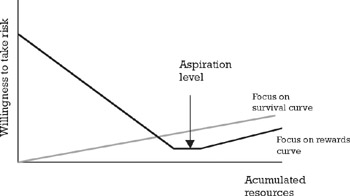8.7 The need for the line function: How much project management is enough?
8.7 The need for the line function: How much project management is enough?
Many project management advocates herald the level of "projectization", the extent to which the organization's business is carried out through projects, as one of the attributes of an efficient organization.
This idea is largely based on the integrative and focused nature of project work, which makes it a superior form of organization when it comes to delivering concrete results in a short time. However, as T. Allen [15] notes in his book Managing the Flow of Technology, the structure of an R&D organization must meet two conflicting goals:
-
The coordination of the various disciplines and specialties in order to accomplish the goals of the multidisciplinary project;
-
The need to innovate and to acquire and sustain knowledge about the technologies on which the projects rely to achieve their goals.
These two goals conflict because the first one is better served by colocating all people working in a common objective and putting them under the control of a single-minded person, while the second one is fostered by keeping the project members within their functional units to facilitate the exchange of technical information and the development of new ideas.
But this is not the only problem of working through projects. By their own nature—limited duration and resources—projects cannot afford to tinker long with alternatives, nor are project managers inclined to do so. In their study of risk-taking behavior [16], Shapira and Berndt found that managers would only take risks (see Figure 8.5), if they felt that they were not going to meet their target. Therefore, once an approach has come along that seems good enough, in all likeliness the project team will run with it and not continue to search for a better, but unknown, solution that could result in project delays or overspending. Furthermore, as the project is disbanded after conclusion, for better or for worse, the members of the team do not have to live with the consequences of whatever it is that they have developed, so sometimes they might feel tempted to take shortcuts that will come back to haunt the organization later.

Figure 8.5: Risk behavior. (Source: [16].)
For the reasons expressed above, it is necessary to supplement the transient, risk-averse, and insular nature of the projects with a line function that gives continuity to the organization and that has as a mandate not to deliver specific results by a given date, but to innovate and promote learning, tasks for which the projects are not well equipped.
EAN: 2147483647
Pages: 81